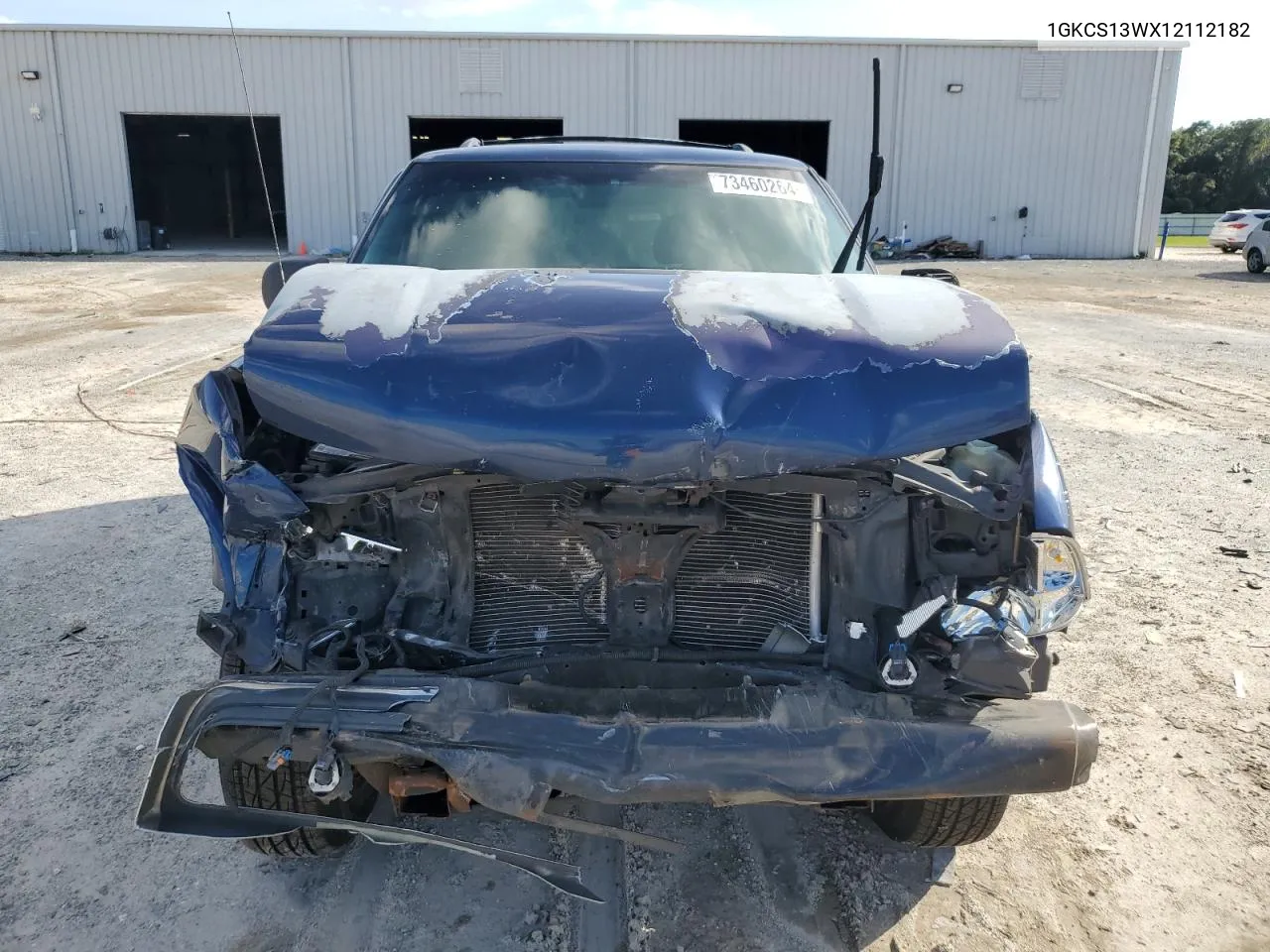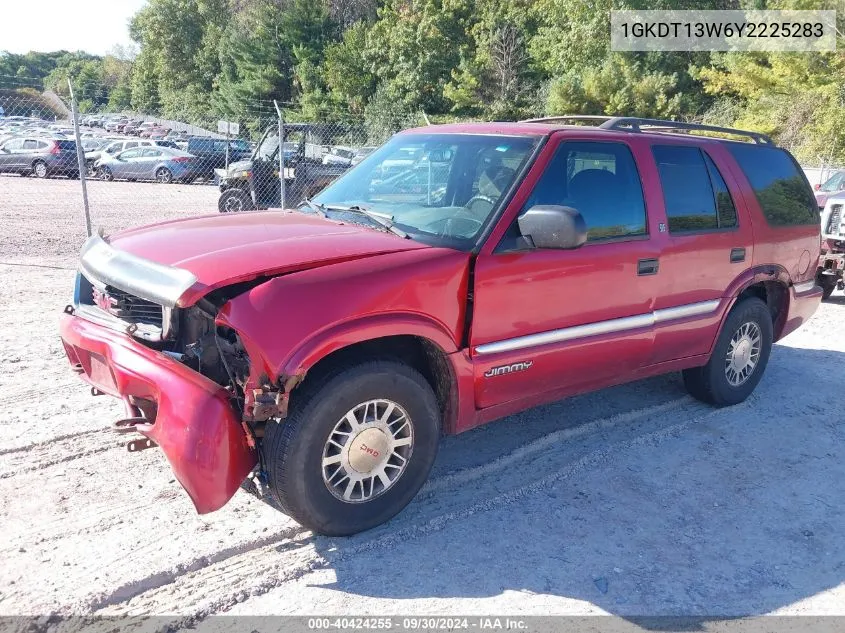GMC Jimmy (42)
2000 GMC Jimmy
2000 GMC Jimmy Slt
2000 GMC Jimmy Slt
2001 GMC Jimmy Sle
2000 GMC Jimmy Sle
2001 GMC Jimmy Sle
1999 GMC Jimmy Slt
1997 GMC Jimmy
1996 GMC Jimmy
1998 GMC Jimmy Sls
2000 GMC Jimmy / Envoy
2001 GMC Jimmy Sle
1997 GMC Jimmy Sls
1998 GMC Jimmy Sle
1997 GMC Jimmy
GMC Jimmy is a symbol of endurance and power in the world of SUVs. Introduced to the market in the late 1960s, this SUV quickly won the hearts of car enthusiasts with its unrivaled cross-country ability and reliability. Over the decades of its existence, GMC Jimmy has gone from a classic SUV to an iconic representative of the American automobile industry.
Since its first generation in 1969, the GMC Jimmy has steadily evolved, undergoing changes in design, technology, and manufacturing methods. The styling and modifications have gone through several significant changes that have brought a fresh look and additional features, while maintaining its distinctive features and recognizable style.
One of the most important aspects of the GMC Jimmy is its color palette. From classic pastel shades to bright and rich tones, the color choices for this SUV have always been varied and attractive to buyers.
Over the years, the GMC Jimmy has achieved iconic status, gaining a loyal following around the world. Despite its high demand and popularity, the GMC Jimmy, like any car, has its problems and weaknesses that potential owners should be aware of.
History of the GMC Jimmy: Evolution and Development
The GMC Jimmy crossover occupies a place of honor in the history of the automobile industry, reflecting the evolution and development of the SUV segment. Having started its journey in the late 1960s, the Jimmy quickly gained popularity due to its reliability, cross-country ability, and style.
The first generation of the GMC Jimmy was introduced in 1969, and in the second half of the 1970s it moved to the Chevrolet Blazer platform and became larger. Over the following decades, the model underwent a number of changes and modifications, as well as introduced new technologies and features to meet market needs.
The next generation, released in 1992, offered a more modern look and improved performance, making it one of the company's most successful model lines. A distinctive feature was the use of all-wheel drive and powerful engines, making the Jimmy a popular choice for off-road enthusiasts and everyday drivers.
Over the years, the GMC Jimmy remained a symbol of reliability and performance, but in the early 2000s, its popularity began to gradually decline due to changing consumer tastes and the emergence of more modern competitors in the market. Despite this, the model remained in demand among connoisseurs of classic SUVs and continued to be produced until 2005, when it was finally discontinued.
Over the course of its existence, the GMC Jimmy has become an icon of the automotive industry, making a significant contribution to the development of the SUV segment and leaving an unforgettable mark on the hearts of many fans.
GMC Jimmy Modifications: Review of All Versions
Over the course of its rich history, the GMC Jimmy has gone through several significant modifications, each adding its own unique features and capabilities. Let's take a look at the main versions of this SUV, from the first releases to the current models.
1. First Generation (1970-1991): Starting its journey in the early 1970s, the GMC Jimmy was introduced as a compact SUV. During this period, it went through several updates, including changes to the body design and updated engines.
1970-1972: The Jimmy was initially offered with a variety of body styles and engines, including a V6 and V8.
1973-1982: During this period, the Jimmy received a more modern design, as well as some technical improvements such as more efficient engines and more comfortable interiors.
1983-1991: The last years of the first generation saw further improvements in design and technology, such as improved front suspension and electronic control systems.
2. Second generation (1992-1999): The second generation of Jimmy saw radical changes in design and technical equipment. This period also saw an expansion of the range of available options and an improvement in comfort.
1992-1994: The second generation brought with it a more modern appearance, as well as improved safety and comfort systems.
1995-1999: During these years, Jimmy became even more popular due to the introduction of new technologies and design solutions, such as all-wheel drive and more powerful engines.
Color Solutions: Popular Colors and Rare Shades
The color scheme of GMC Jimmy cars varied depending on the year of production and modification, reflecting the trends and preferences of car enthusiasts of each era. Over the years of the model's existence, some colors became symbols of certain periods or were especially popular, while others remained rare and sought after by collectors.
Since its early production years in the 1970s, popular colors for the GMC Jimmy have been classic shades such as Tan Metallic, Dark Green and Metallic Red. These colors were known to last over time and were popular among owners seeking a classic and elegant style. In subsequent decades, new shades were added such as Deep Blue, Onyx Black and Magnolia Pearl, giving the Jimmy a modern and sophisticated look.
Popular Colors:
Light brown metallic
Dark green
Metallic red
Deep Blue
Black Onyx
Rare Shades:
Magnolia Mother of Pearl
Terracotta
Silver Ice
Amethyst Metallic
Sandy Beach
Despite the wide range of color options, some shades remained rare and difficult to obtain, making cars in these colors especially attractive to collectors. At the same time, popular colors often represented stability and reliability, attracting a wide range of potential buyers. Regardless of the color chosen, the GMC Jimmy continued to be a symbol of durability and style throughout its many years of existence.
Years of Production and Sales: Statistics and Analysis
GMS Jimmy, as a legendary representative of the SUV family, was produced in various modifications from the late 1960s to the early 2000s. This car has become the embodiment of reliability and power for many owners, attracting attention with its characteristics and durability.
Despite its historical significance, the GMC Jimmy's sales statistics have not always been clear-cut. During its peak popularity in the late 1970s and early 1980s, the model sold in significant numbers, successfully competing in the SUV market. However, with the emergence of new competitors and changes in consumer preferences, sales began to decline in the late 1990s and beyond.
Here's a quick summary of annual sales by key period:
1970s: HMS Jimmy reached the peak of its popularity, with sales at a high level, especially in North America.
1980s: Sales continued to be strong, although competition intensified during this period, affecting the GMC Jimmy's market share.
1990s: Interest in the model began to decline, sales dropped, and the company was forced to reconsider its strategy.
2000s: In its final years of production, sales were relatively low and the GMC Jimmy was discontinued.
The Most Successful and Problematic Models: Top and Anti-Top
Summing up the history of the GMC Jimmy, it is worth highlighting both the most successful and problematic models of this SUV. Despite the many changes and various modifications, some of them deserve special attention.
Most Successful Models:
1. The first generation GMC Jimmy, produced in the 1970s, gained popularity due to its reliability and rugged construction. This model became the basis for subsequent developments and formed the basis for the success of the entire Jimmy line.
2. The second generation of GMC Jimmy, produced in the 1990s, was also popular due to its comfort and outdoor activities. Improved design and new technologies made this model attractive to buyers.
Problem Models (Anti-Top):
1. Some first-generation GMC Jimmy models suffered from body and frame corrosion problems due to insufficient rust protection. This led to rapid wear and weakening of the structure, which required significant investments in repairs and maintenance.
2. The second generation GMC Jimmy also had problems with the reliability of some components and assemblies, especially in models of the late 1990s. Poor materials and workmanship could lead to breakdowns and high maintenance costs.
Since its first generation in 1969, the GMC Jimmy has steadily evolved, undergoing changes in design, technology, and manufacturing methods. The styling and modifications have gone through several significant changes that have brought a fresh look and additional features, while maintaining its distinctive features and recognizable style.
One of the most important aspects of the GMC Jimmy is its color palette. From classic pastel shades to bright and rich tones, the color choices for this SUV have always been varied and attractive to buyers.
Over the years, the GMC Jimmy has achieved iconic status, gaining a loyal following around the world. Despite its high demand and popularity, the GMC Jimmy, like any car, has its problems and weaknesses that potential owners should be aware of.
History of the GMC Jimmy: Evolution and Development
The GMC Jimmy crossover occupies a place of honor in the history of the automobile industry, reflecting the evolution and development of the SUV segment. Having started its journey in the late 1960s, the Jimmy quickly gained popularity due to its reliability, cross-country ability, and style.
The first generation of the GMC Jimmy was introduced in 1969, and in the second half of the 1970s it moved to the Chevrolet Blazer platform and became larger. Over the following decades, the model underwent a number of changes and modifications, as well as introduced new technologies and features to meet market needs.
The next generation, released in 1992, offered a more modern look and improved performance, making it one of the company's most successful model lines. A distinctive feature was the use of all-wheel drive and powerful engines, making the Jimmy a popular choice for off-road enthusiasts and everyday drivers.
Over the years, the GMC Jimmy remained a symbol of reliability and performance, but in the early 2000s, its popularity began to gradually decline due to changing consumer tastes and the emergence of more modern competitors in the market. Despite this, the model remained in demand among connoisseurs of classic SUVs and continued to be produced until 2005, when it was finally discontinued.
Over the course of its existence, the GMC Jimmy has become an icon of the automotive industry, making a significant contribution to the development of the SUV segment and leaving an unforgettable mark on the hearts of many fans.
GMC Jimmy Modifications: Review of All Versions
Over the course of its rich history, the GMC Jimmy has gone through several significant modifications, each adding its own unique features and capabilities. Let's take a look at the main versions of this SUV, from the first releases to the current models.
1. First Generation (1970-1991): Starting its journey in the early 1970s, the GMC Jimmy was introduced as a compact SUV. During this period, it went through several updates, including changes to the body design and updated engines.
1970-1972: The Jimmy was initially offered with a variety of body styles and engines, including a V6 and V8.
1973-1982: During this period, the Jimmy received a more modern design, as well as some technical improvements such as more efficient engines and more comfortable interiors.
1983-1991: The last years of the first generation saw further improvements in design and technology, such as improved front suspension and electronic control systems.
2. Second generation (1992-1999): The second generation of Jimmy saw radical changes in design and technical equipment. This period also saw an expansion of the range of available options and an improvement in comfort.
1992-1994: The second generation brought with it a more modern appearance, as well as improved safety and comfort systems.
1995-1999: During these years, Jimmy became even more popular due to the introduction of new technologies and design solutions, such as all-wheel drive and more powerful engines.
Color Solutions: Popular Colors and Rare Shades
The color scheme of GMC Jimmy cars varied depending on the year of production and modification, reflecting the trends and preferences of car enthusiasts of each era. Over the years of the model's existence, some colors became symbols of certain periods or were especially popular, while others remained rare and sought after by collectors.
Since its early production years in the 1970s, popular colors for the GMC Jimmy have been classic shades such as Tan Metallic, Dark Green and Metallic Red. These colors were known to last over time and were popular among owners seeking a classic and elegant style. In subsequent decades, new shades were added such as Deep Blue, Onyx Black and Magnolia Pearl, giving the Jimmy a modern and sophisticated look.
Popular Colors:
Light brown metallic
Dark green
Metallic red
Deep Blue
Black Onyx
Rare Shades:
Magnolia Mother of Pearl
Terracotta
Silver Ice
Amethyst Metallic
Sandy Beach
Despite the wide range of color options, some shades remained rare and difficult to obtain, making cars in these colors especially attractive to collectors. At the same time, popular colors often represented stability and reliability, attracting a wide range of potential buyers. Regardless of the color chosen, the GMC Jimmy continued to be a symbol of durability and style throughout its many years of existence.
Years of Production and Sales: Statistics and Analysis
GMS Jimmy, as a legendary representative of the SUV family, was produced in various modifications from the late 1960s to the early 2000s. This car has become the embodiment of reliability and power for many owners, attracting attention with its characteristics and durability.
Despite its historical significance, the GMC Jimmy's sales statistics have not always been clear-cut. During its peak popularity in the late 1970s and early 1980s, the model sold in significant numbers, successfully competing in the SUV market. However, with the emergence of new competitors and changes in consumer preferences, sales began to decline in the late 1990s and beyond.
Here's a quick summary of annual sales by key period:
1970s: HMS Jimmy reached the peak of its popularity, with sales at a high level, especially in North America.
1980s: Sales continued to be strong, although competition intensified during this period, affecting the GMC Jimmy's market share.
1990s: Interest in the model began to decline, sales dropped, and the company was forced to reconsider its strategy.
2000s: In its final years of production, sales were relatively low and the GMC Jimmy was discontinued.
The Most Successful and Problematic Models: Top and Anti-Top
Summing up the history of the GMC Jimmy, it is worth highlighting both the most successful and problematic models of this SUV. Despite the many changes and various modifications, some of them deserve special attention.
Most Successful Models:
1. The first generation GMC Jimmy, produced in the 1970s, gained popularity due to its reliability and rugged construction. This model became the basis for subsequent developments and formed the basis for the success of the entire Jimmy line.
2. The second generation of GMC Jimmy, produced in the 1990s, was also popular due to its comfort and outdoor activities. Improved design and new technologies made this model attractive to buyers.
Problem Models (Anti-Top):
1. Some first-generation GMC Jimmy models suffered from body and frame corrosion problems due to insufficient rust protection. This led to rapid wear and weakening of the structure, which required significant investments in repairs and maintenance.
2. The second generation GMC Jimmy also had problems with the reliability of some components and assemblies, especially in models of the late 1990s. Poor materials and workmanship could lead to breakdowns and high maintenance costs.


































































































































